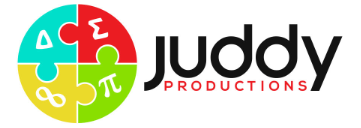How can waves explain the behaviour of light?
In this area of study students use evidence from experiments to explore wave concepts in a variety of applications. Wave theory has been used to describe transfers of energy, and is important in explaining phenomena including reflection, refraction, interference and polarisation. Do waves need a medium in order to propagate and, if so, what is the medium? Students investigate the properties of mechanical waves and examine the evidence suggesting that light is a wave. They apply quantitative models to explore how light changes direction, including reflection, refraction, colour dispersion and polarisation.
On completion of this unit the student should be able to apply wave concepts to analyse, interpret and explain the behaviour of light.
Key knowledge
Properties of mechanical waves
- explain a wave as the transmission of energy through a medium without the net transfer of matter
- distinguish between transverse and longitudinal waves
- identify the amplitude, wavelength, period and frequency of waves
- calculate the wavelength, frequency, period and speed of travel of waves using:
- investigate and analyse theoretically and practically constructive and destructive interference from two sources with reference to coherent waves and path difference:
and
respectively
- explain qualitatively the Doppler effect
- explain resonance as the superposition of a travelling wave and its reflection, and with reference to a forced oscillation matching the natural frequency of vibration
- analyse the formation of standing waves in strings fixed at one or both ends
- investigate and explain theoretically and practically diffraction as the directional spread of various frequencies with reference to different gap width or obstacle size, including the qualitative effect of changing the
ratio.
Light as a wave
- describe light as an electromagnetic wave which is produced by the acceleration of charges, which in turn produces changing electric fields and associated changing magnetic fields
- identify that all electromagnetic waves travel at the same speed, c, in a vacuum
- compare the wavelength and frequencies of different regions of the electromagnetic spectrum, including radio, microwave, infrared, visible, ultraviolet, x-ray and gamma, and identify the distinct uses each has in society
- explain polarisation of visible light and its relation to a transverse wave model
- investigate and analyse theoretically and practically the behaviour of waves including:
– refraction using Snell’s Law:) and
– total internal reflection and critical angle including applications: - investigate and explain theoretically and practically colour dispersion in prisms and lenses with reference to refraction of the components of white light as they pass from one medium to another
- explain the results of Young’s double slit experiment with reference to:
– evidence for the wave-like nature of light
– constructive and destructive interference of coherent waves in terms of path differences:and
respectively
– effect of wavelength, distance of screen and slit separation on interference patterns:
(Source: vcaa.vic.edu.au)
